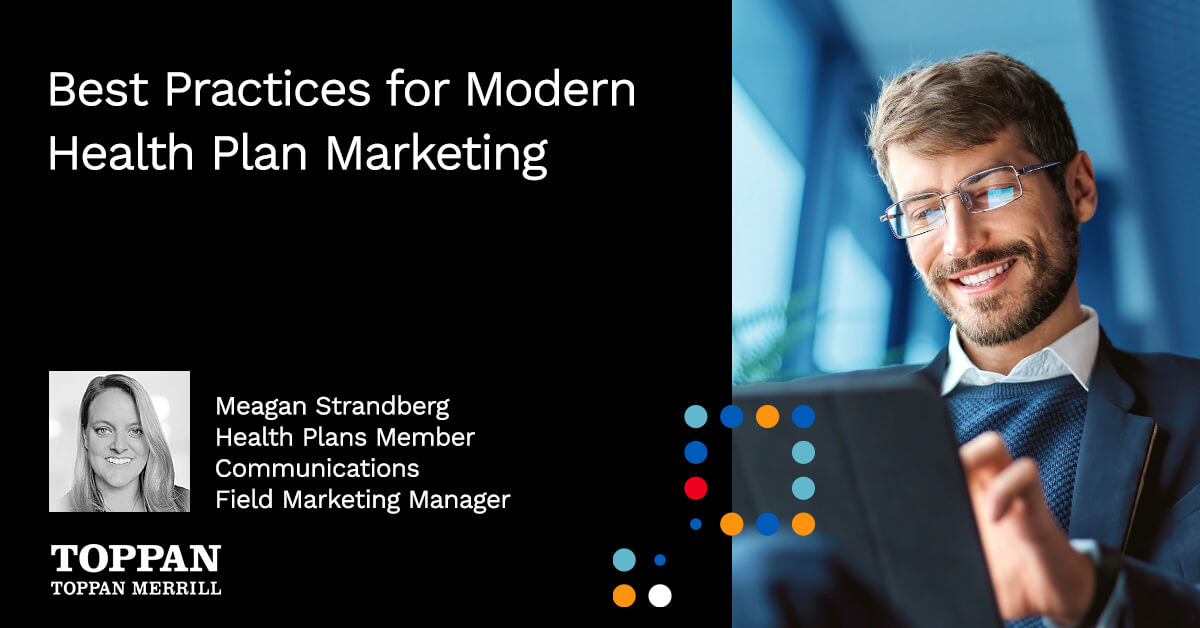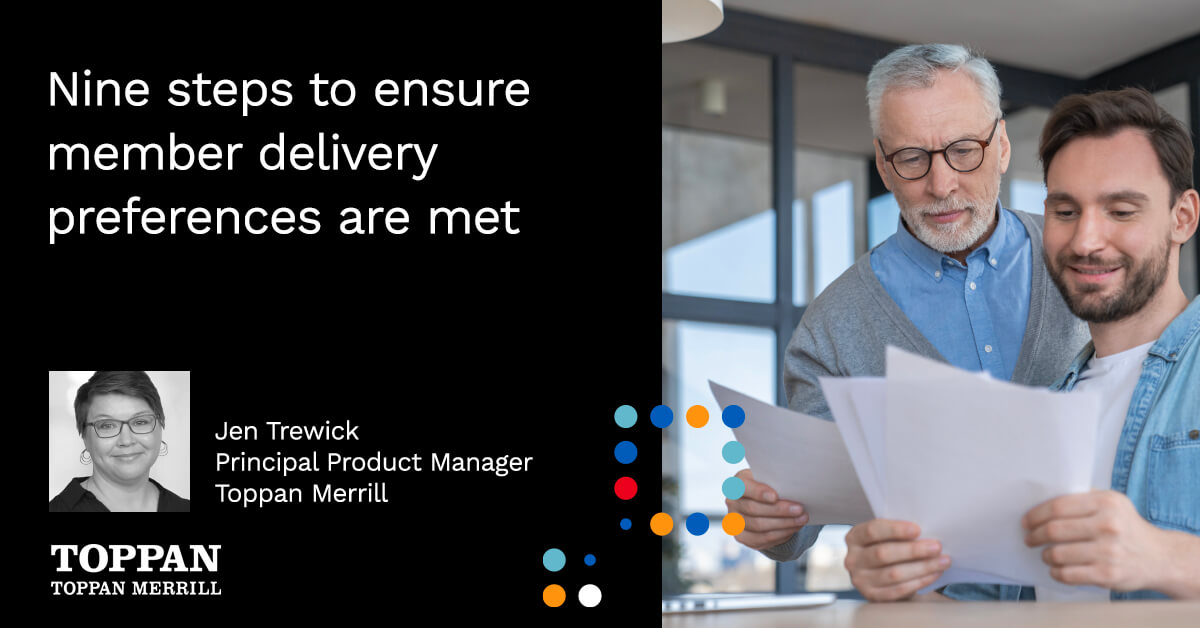As the need for digital transformation has been accelerated over the past year, so has the struggle to find the right channels to stay connected with your members without getting lost in their inbox. Utilizing a balance of traditional and digital channels to improve your member communications and prospective customer outreach is only half the battle. It is also important to accurately connect the different parts of your campaign. With a full 91% of marketing managers reporting that they do not have access to a fully integrated technology stack, the need for connected campaign management and reporting is more important than ever.
Managing the process
In the health insurance industry, dynamic content management and automated client communications are essential for ensuring compliance and accuracy across both digital and traditional communications. Centralizing the management and production of your campaigns into a single platform can streamline the creation, management, proofing and production of your communication, regardless of the distribution channel. This will enable you to centralize workflow management, create data-handling improvements and provide cost-savings throughout. With one centralized source of truth you improve productivity, efficiency and compliance in the following ways:
- Productivity— Access to the right communication, at the right time, and through the right means ensures everyone is on the same page throughout the entire lifecycle of a project. This increases productivity since employees are not duplicating work and are generally more in sync as they complete tasks and pass information along.
- Efficiency— When teams can access centralized information, the extra time required to get individual stakeholders up to speed on project status is eliminated. Therefore, tasks and projects are managed much more efficiently. Your not managing digital communications in one system and traditional communications in another.
- Compliance— All team members are continually updated on the latest conversations, documentation, and information, which leads to more compliant brand alignment.
For more connected management and reporting that can correctly identify efficiencies, Payors need to identify a solutions partner that can assist in connecting all the intricacies, from capturing and managing consent to ensuring leads, opportunities, and sales are correctly attributed to their source campaign.
Connected campaign reporting
When marketers and product managers attempt to measure their outreach campaigns for efficiency measures (e.g., read rates, engagement rates, leads generated, etc.), they often run into bottlenecks with data that is siloed across disparate systems in use by their team.
When there is no centralized data management, getting the data needed for campaign reporting can take much longer than it should. Additionally, from disconnected campaign reports, the measures of success tend to be more confusing, making it unclear what data you should choose and use to discover how many leads, opportunities, and sales you’ve generated from that given outreach campaign — leading to untimely and inaccurate reporting. Multiple data dashboards and reports from disparate and unconnected tools, only further complicate the reporting process.
Even before COVID-19, overly dispersed systems, siloed data, and divergent data from outside partners (e.g., marketing agencies) have made it challenging for Payors looking for clear picture of a campaign’s ROI. To counter this difficulty and rise above the clutter, it is imperative for businesses to have well-connected, centralized systems with accurate tracking in place for campaign reporting.
Capturing and managing consent
With the goal of finding the right balance between traditional and digital communications, it is important to remember that transitioning some of your member communications to digital requires their willingness, ability, and specific consent to do so. Obtaining the support of your members for digital communications requires a focused effort across the organization. Some different times when you can solicit member consent for digital communication include:
- New member signups should emphasize the importance of consenting to multiple digital communication channels and solicit permission to communicate digitally.
- Customer support calls should include a solicitation for member communications to move to digital means.
- Direct mail letters and member documents should invite customers to receive future communications via digital channels in addition to mail.
Once you’ve captured their consent, managing it across your organization, and at the document level, is also important. Capturing consent at the document level helps your members enjoy the balance between traditional and digital outreach approaches, allowing them to select what they want, when they want it, and how they want it. For example, while they may prefer to receive their annual enrollment materials via the mail, they may prefer the monthly newsletter to arrive in their email inboxes. A robust communication preference center can be more easily managed at the enterprise level and enables the members to make changes without the hassle of needing to call customer support.
As any marketer or product expert can attest, managing diverse multichannel outreach campaigns in regulated industries such as health insurance requires a level of industry knowledge that can only be gained with time. Toppan Merrill has been working with the health insurance industry and understands the nuanced approaches necessary to help insurers balance traditional and digital channels for both current and prospective members. Toppan Merrill brings industry-level expertise, centralization and automation solutions, and a “work smarter, not harder” mindset to every client engagement.
How Toppan Merrill can help
Toppan Merrill offers several services, including document creation and management, sales enablement, omnichannel communications, printing services, and more. We deliver best-in-class solutions that help you respond quickly to changes in regulations, client needs and markets.
Learn more about how we can help you with mission-critical content by visiting our website.



